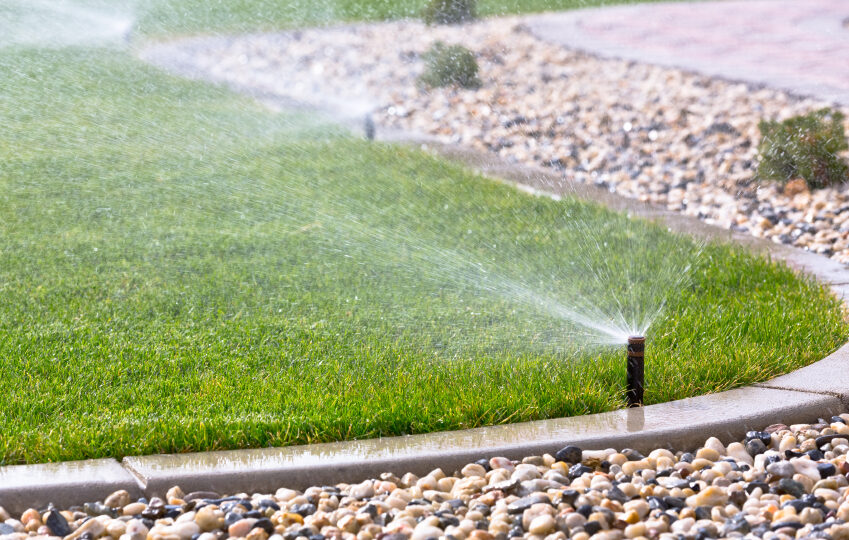Introduction
Green lawns, healthy foliage. Lawn sprinkler systems are a great way to keep your lawn looking healthy and green, while reducing watering time and keeping the water where it belongs. Water savings
The amount of water used by a lawn will vary depending on its size and location, but many homeowners can expect to save up to 20 percent by using a sprinkler system instead of hand-watering Drought-tolerant plants
A sprinkler system will allow you to use drought-tolerant plants that don’t require much extra care during the winter months, such as bulbs and succulents Easy maintenance
Lawn sprinklers are designed with easy-to-use controls so you can turn them on and off when needed and adjust the flow rate based on plant health or rainfall levels
Green lawns, healthy foliage.
Maintaining a healthy lawn is an important step in maintaining a healthy landscape, garden and vegetable garden. It’s also an essential part of ensuring that your flowers, trees and shrubs are thriving.
A sprinkler system provides the moisture necessary for lush green grass to grow at its best. With proper maintenance and care, you can have beautiful lawns all year round without ever having to worry about watering them yourself!
Lawn sprinkler systems are a great way to keep your lawn looking healthy and green, while reducing watering time and keeping the water where it belongs.
Lawn sprinkler systems are a great way to keep your lawn looking healthy and green, while reducing watering time and keeping the water where it belongs.
If you have ever had an issue with over-watering or overwatering in your lawn, then you know how important it is for plants thrive properly. With this in mind, consider installing a sprinkler system that can be adjusted based on plant health or rainfall levels. A good example of this can be seen at our local hardware store where they sell several different types of irrigation systems (including automatic ones) which allow homeowners to control their own water usage—allowing them to achieve optimal results without having too much control over their surroundings themselves!
Water savings.
Sprinklers are the most efficient way to water. When you use sprinklers, you need only add a little water when the lawn needs it and no more. This reduces the need for irrigation systems and can save up to 20% on your water bill!
The amount of water used by a lawn will vary depending on its size and location, but many homeowners can expect to save up to 20 percent by using a sprinkler system instead of hand-watering.
The amount of water used by a lawn will vary depending on its size and location, but many homeowners can expect to save up to 20 percent by using a sprinkler system instead of hand-watering. For example, if you have an average-sized lawn with an average-sized sprinkler system and water it twice per week (or more), you will use about 1,000 gallons per month. This is equivalent to 1/2 inch of rain falling on your property every day for six months straight! To put it simply: if you don’t want any more than that in your garden or yard this year, then consider installing one now!
To determine which type of sprinkler controller is best for your needs:
- Determine how much time each day you want spent watering (and therefore how often) before purchasing a controller; some models can be set up remotely while others require manual adjustment every time they detect rainfall events occurring nearby within range (which may vary depending on location).
- Look at reviews online so as not only determine whether customers found them easy enough but also whether they’re happy with their purchase decisions so far after using them regularly over time – these things matter when making decisions like these one never knows what might happen next!
Drought-tolerant plants.
A drought-tolerant plant is a great choice for the lawn sprinkler system. These plants don’t require much water, so you will save money on your landscaping expense by using them instead of other types of grasses or flowers. Drought-tolerant plants include succulents and bulbs like tulips and daffodils, which can be planted in areas where the soil has been depleted by previous seasons’ heavy rainfall patterns.
Succulents are also one of the best options when it comes to adding color to your landscape because they require little maintenance, making them easy to care for year after year as well as providing beautiful blooms throughout summertime!
A sprinkler system will allow you to use drought-tolerant plants that don’t require much extra care during the winter months, such as bulbs and succulents.
Drought-tolerant plants are better for the environment because they don’t require much extra care during the winter months. They’re also easier to maintain, so you can use them in a variety of landscapes. For example, drought-tolerant bulbs such as sweet peas and snapdragons will grow into beautiful bloomers while remaining healthy and beautiful throughout their lives—no mowing required!
Easy maintenance.
Also, sprinkler systems are easy to install and can be automated to turn on and off automatically. You simply need to hook up the water source and then set up a timer for the sprinklers to operate. This will prevent any damage from overwatering, which can cause mildew or fungus growth on your lawn. The system also offers adjustable settings so that it can be adjusted according to weather conditions or plant health – for example if you have a new tree in your yard that needs extra nutrients during its growing season; or if you live in an area where there’s drought-like conditions every year (or even just once every few years).
Lawn sprinklers are designed with easy-to-use controls so you can turn them on and off when needed and adjust the flow rate based on plant health or rainfall levels.
Lawn sprinklers are designed with easy-to-use controls so you can turn them on and off when needed and adjust the flow rate based on plant health or rainfall levels. For example, if your lawn needs more water than a sprinkler can provide because it’s been dry for several weeks, simply adjust the sprinklers’ settings to lower their output until they’re just right.
The controls are also convenient because they’re located at the base of each valve (where they’ll be most convenient) instead of having to reach up into an awkward location like another control knob would require. This makes it easier for people with limited mobility to use them as well as those who have difficulty reaching higher locations or reaching around obstacles such as trees or bushes that might block access to other parts of their yard
Sprinklers can help control your landscape without sacrificing beauty
Sprinklers can be an important part of your landscape and they’ll help maintain the health, beauty, and function of your lawn. Unfortunately, there are times when sprinklers stop working properly. If this happens to you or someone else in your family, it’s important to know how to repair them so that the problem doesn’t get worse.
- Watering schedule: When should I water my lawn? The best way for homeowners to control their sprinkler system is through regular maintenance and proper use. You should check for different types of grasses at least once every month and adjust watering schedules accordingly based on what type you have: turf vs annuals vs perennials.* How do I turn off/on my sprinkler system? Most systems allow users who want more control over how long and where they want their water applied within each zone (zone 1-3). This means that if one part of an area needs more water than another one then there is likely some sort of valve at play here which will take care off those issues automatically without any involvement from us humans!
Conclusion
So there you have it: the benefits of sprinklers. They can save you time, money, and water—and they’re easy to maintain. We hope this article has given you some ideas on how to make your landscape more beautiful while saving resources at the same time!







